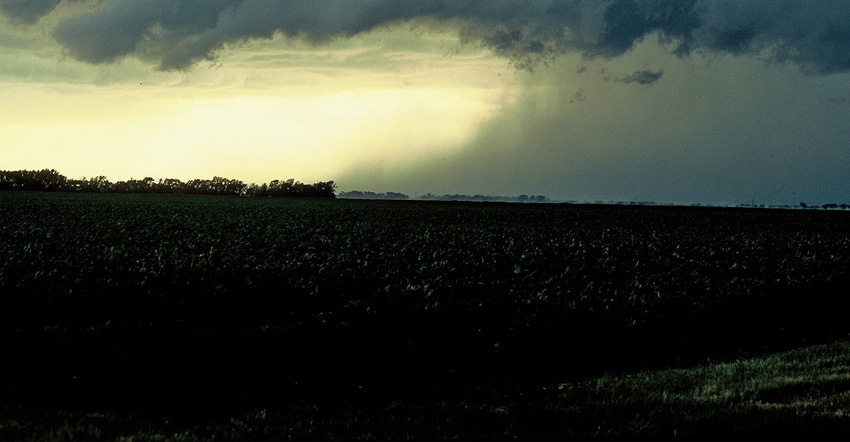November 8, 2017

Will there be a drought again in the Northern Plains next year? No one knows sure. But some farmers and ranchers are making plans for one.
The North Dakota State University Dickinson Research Extension Center’s strategy is to capture more of the rain that falls on its land.
“It usually rains some time during the year — even in a drought — and when it does we want the soil to absorb all of it. We don’t want any of it to run off,” says Kris Ringwall, director of the center and an NDSU Extension beef specialist.
In 2008, the Center switched from minimum-till to no-till and implemented a new crop rotation on a quarter of land that absorbed just 1.3 inches of rain per hour. “After a hard rain, the land looked like a lake,” Ringwall says. “Essentially, a good rain simply would run off the land, moving onto other parts of the watershed.”
Instead of small grain-row crop rotation, they grew three years of alfalfa followed by a triticale and hairy vetch mix. Then they rotated to corn, then to an oats and peas mix; then to a multi-species full season cover, then to corn, then to spring wheat and finally to winter wheat.
Over the eight years since, the average water infiltration rate increased 685%, rising from 1.3 inches per hour to 10.2 inches per hour. Plant-available nitrogen rose from 100 pounds per acre to 175 pounds per acre.
The center applied many of the same practices to another quarter of land, only in this case the cropping rotation was five years and they added cattle to the system. The rotation was spring wheat, a multispecies cover crop, corn, field peas plus barley and, finally, sunflowers. They harvested spring wheat and sunflowers for the grain and seeds. They turned cattle out to graze the other crops in the rotation. The rotation allowed for more than 100 grazing days. Steers gained more than 2 pounds per head per day on the field peas-barley, standing corn and cover crop mix.
OTHER ARTICLES IN THE SERIES:
3 steps a South Dakota rancher takes to always be ready for dry times.
You May Also Like




